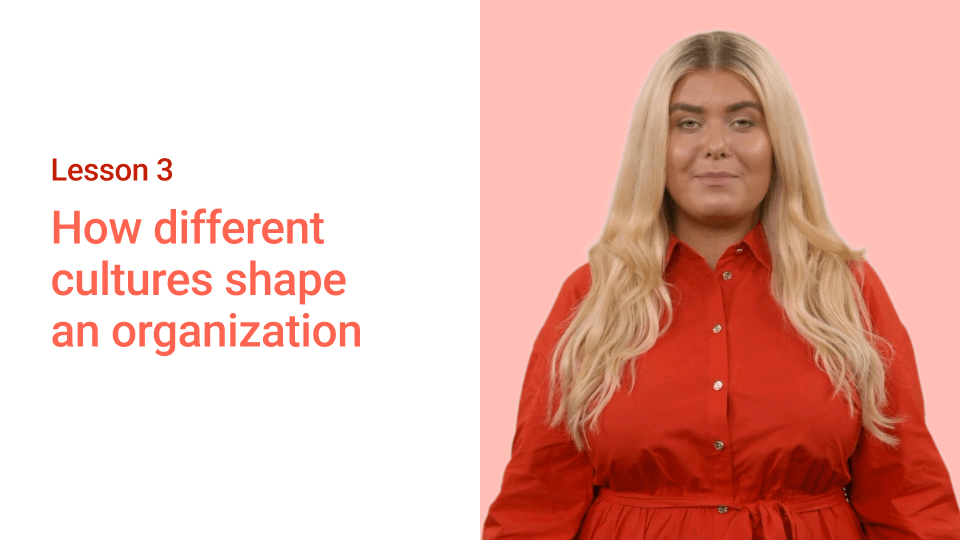How different cultures shape an organisation
In this lesson, you’ll learn how cultural diversity in the modern workplace shapes our identities, brings people together, and preserves history. We will also discuss the benefits of understanding and recognising different cultures and the ways in which companies promote cultural diversity through training and policies.
This project update template features:
Video script
In modern workplaces, there are people who belong to different religions, races, and ethnic identities, who come from countries around the world, speak different languages, and celebrate different holidays.
The last decade has brought massive globalization and, as a result, massive immigration around the globe. The United States of America and Europe are now becoming more ethnically diverse and multicultural faster than ever before. Culture is an integral part of every person and stays with them even when they live in a new place.
Culture shapes a person's identity, his behavior and makes him who he is, brings people together to celebrate various festivals and mourn together, and preserves the history of a group of people who identify closely with each other.
Cultural diversity in a workplace means that people from different cultures are recognized and respected for their differences in interests, talents, and skills.
Although trying to understand another culture can sometimes be difficult, it is always worth the effort. Recognizing and trying to understand another culture can lead to the reduction of prejudice and existing misunderstandings, a more open view of the world, and a growth mindset that reduces the likelihood of discrimination against other cultures.
To promote cultural diversity in the workplace and help employees better understand each other, companies today conduct cultural diversity training, create opportunities for different cultures to mix and share, and have clearly defined diversity policies.
In the next lesson, you will learn about unconscious biases and their effects in the workplace.
FAQs






